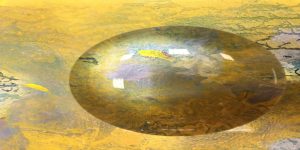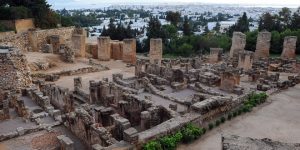17 mummies discovered around Giza Pyramids in Cairo, Central Egypt
Archaeologists recently unearthed an astonishing find in Cairo, adding to the country’s list of artifacts

Millions of tourists visited Egypt every year to see its Giza Pyramids — the only surviving monument of the Seven Wonders of the Ancient World — and its ancient pharaonic temples and relics. Egyptian archaeologists have discovered 17 mummies in desert catacombs in Minya province, an unprecedented find for the area south of Cairo, the antiquities ministry announced on May 13.
Archaeologists found the non-royal mummies in a series of corridors after following the trail of burial shafts in the Touna-Gabal district of the central Egyptian province, the ministry said in a statement. Along with the mummies, they found a golden sheet and two papyri in Demotic — an ancient Egyptian script — as well as a number of sarcophogi made of limestone and clay. There were also animal and bird coffins, the ministry said. But the mummies have not yet been dated.
The ministry said they belonged to the Late Period, which spanned almost 300 years up to Alexander the Great’s conquest of Egypt in 332 BC. But a spokeswoman told AFP they could also date from the Ptolemaic Dynasty, founded by Alexander the Great’s general Ptolemy. The discovery of the non-royal mummies is considered unprecedented because it is the first such find in the area, officials said at the site.
Egyptologist Salah al-Kholi told a news conference held near the desert site that the discovery was “the first human necropolis found in central Egypt with so many mummies”. It could herald even more discoveries in the area, he said.
The discovery was “important, unprecedented,” Mohamed Hamza, director of excavations for Cairo University said. The site is close to an ancient animal cemetery. “The discovery is still at its beginning,” Antiquities Minister Khaled al-Enany told reporters. It was the second discovery of mummies announced with much fanfare by the government in less than a month.
In April, the ministry invited reporters to the southern city of Luxor to unveil eight mummies discovered in a 3,500-year-old tomb belonging to a nobleman. For the cash-strapped Egyptian government, the discoveries are a boon from the country’s glorious past as it struggles to attract tourists scared off by a series of Islamist militant attacks.
“Antiquities are the soft power that distinguishes Egypt,” Enany said. “News of antiquities are the things that attract the world to Egypt.”
Millions of tourists visited Egypt every year to see its Giza Pyramids — the only surviving monument of the Seven Wonders of the Ancient World — and its ancient pharaonic temples and relics. But a popular uprising in 2011 that overthrew veteran strongman Hosni Mubarak ushered in years of unrest that battered the economy and drove away tourists.









